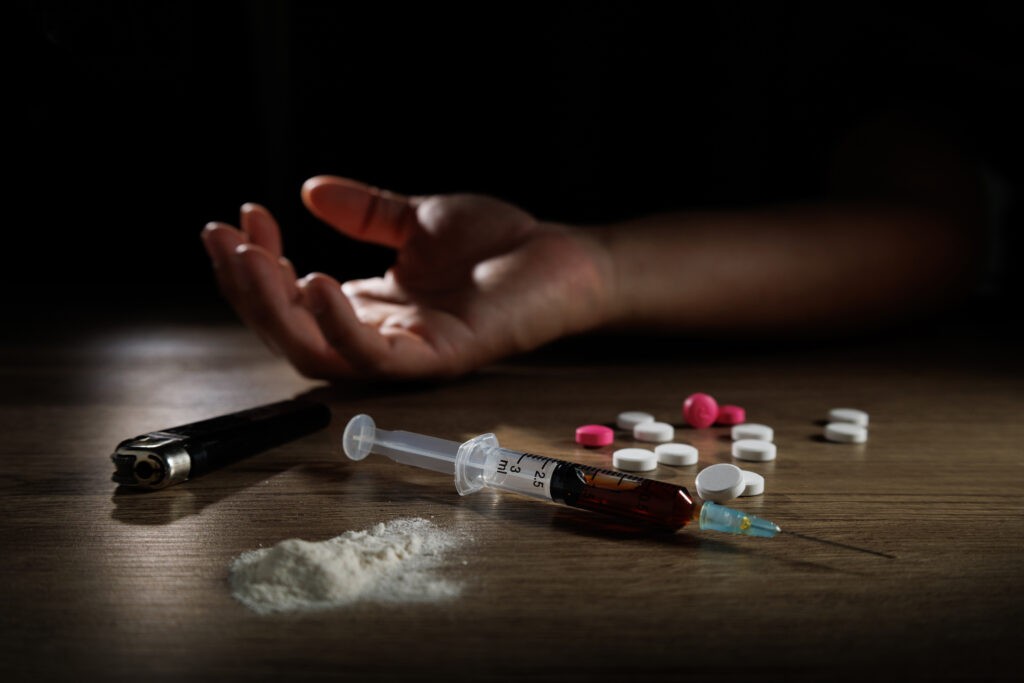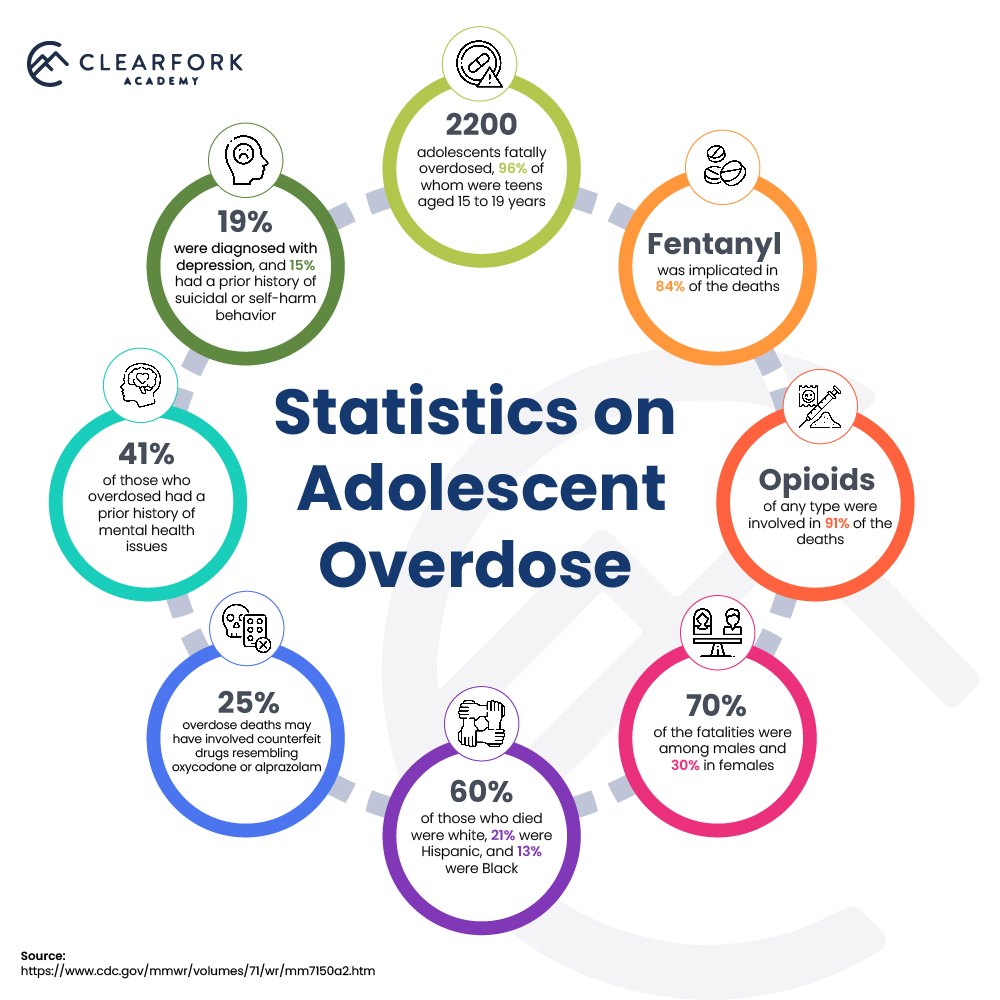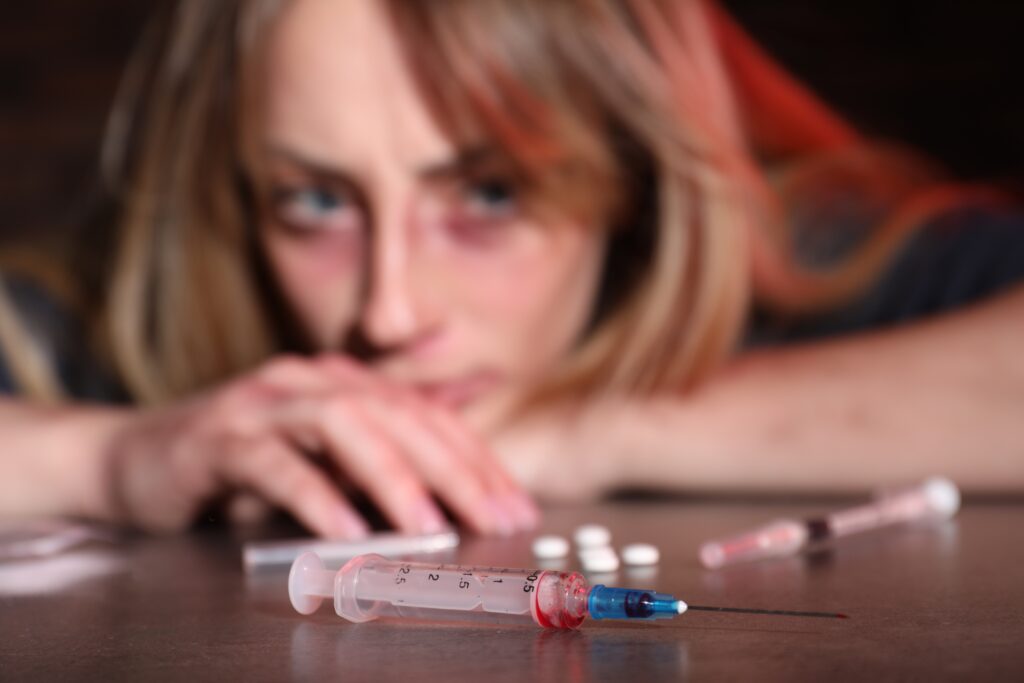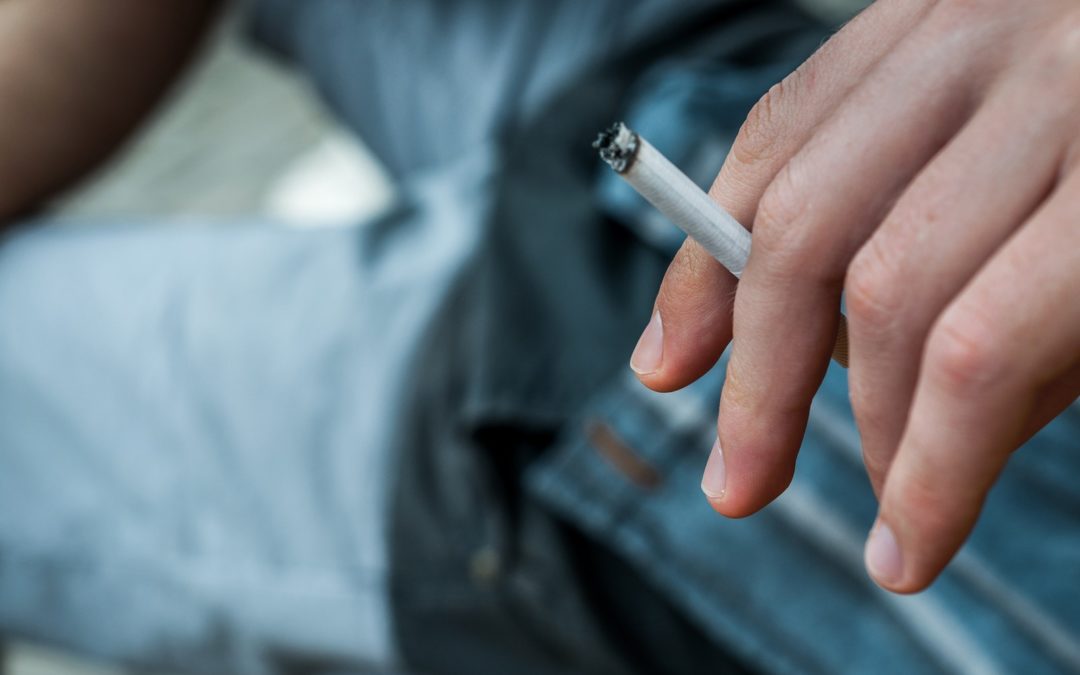Table of Contents
- Introduction
- Understanding Opioid Abuse in Teens
- The Impact on Teens
- Recognizing the Need for Treatment
- Types of Opioid Treatment Programs
- Choosing the Right Treatment for Your Teen
- The Role of Family Support
- What to Expect During Treatment
- Insurance and Financial Considerations
- Aftercare and Relapse Prevention
- Finding Professional Help
- There’s a Path to Hope and Recovery
- Key Takeaways
- Sources
- Resources

Introduction
Overview of Opioids
Opioids, a class of drugs known for their pain-relieving effects, have become a topic of significant concern for parents and guardians, especially as the incidence of substance abuse among teenagers continues to rise.
In this blog, I provide you with valuable information to support your journey to learn more and choose how to approach possible treatment for your teen.
Definition and Classification
Opioids are a group of natural, semi-synthetic, and synthetic substances derived from the opium poppy plant or synthesized in laboratories.
These substances are primarily used for their analgesic (pain-relieving) properties.
Opioids work by binding to opioid receptors in the brain, spinal cord, and other areas of the body, effectively blocking pain signals and inducing feelings of relaxation and euphoria.
The classification of opioids is broad and includes several types based on their source and potency.
Natural opioids, such as morphine and codeine, are directly derived from opium.
Semi-synthetic opioids, like oxycodone and hydrocodone, are created in laboratories from natural opiates.
Synthetic opioids, including fentanyl and methadone, are entirely manufactured in labs and are known for their high potency.
Opioids are further classified based on their legal status and potential for abuse.
Prescription opioids, used medically for pain relief, are regulated but have a potential for misuse.
On the other hand, illegal opioids, such as heroin, are commonly abused and have no medical use.
Common Medical Uses
Opioids have a significant role in modern medicine, primarily used for pain management.
They are effective in treating acute pain, such as that experienced after surgery or a severe injury, and chronic pain, including cancer-related pain or long-term conditions like arthritis.
In addition to pain relief, certain opioids are used for other medical purposes.
For example, methadone is often prescribed for opioid addiction treatment, helping to reduce withdrawal symptoms and cravings. Codeine, another opioid, is sometimes used for its cough-suppressant properties.
Understanding opioids—their types, uses, and the risks they pose—is crucial for parents and guardians dealing with teen substance abuse issues.
This knowledge not only helps in recognizing the signs of opioid misuse but also in understanding the challenges and treatments involved in overcoming opioid addiction.
As the prevalence of opioid abuse continues to impact families and communities, staying informed is a vital step in safeguarding the health and well-being of our youth.
Brief History of Opioid Misuse
The history of opioid use is a complex tapestry that intertwines medicine, culture, and the evolving understanding of addiction and pain management.
Opioids, derived from the opium poppy, have been used since ancient times, with evidence of opium cultivation and use in Mesopotamia as early as 3400 BC.
Ancient civilizations like the Greeks and Egyptians used opium for its pain-relieving and soothing properties, recognizing its potency and value in medicine.
The true turning point in opioid history came with the isolation of morphine from opium in the early 19th century by German pharmacist Friedrich Sertürner.
This discovery revolutionized pain management, offering a more potent and direct form of pain relief.
However, the addictive potential of morphine soon became apparent, leading to widespread misuse, particularly noted during the American Civil War.
In an attempt to find a less addictive alternative, heroin was synthesized from morphine in the late 19th century and initially marketed as a safe, non-addictive painkiller.
This misconception contributed to a surge in addiction rates.
The 20th century witnessed the development of synthetic opioids like fentanyl and methadone, designed for greater efficacy and controlled use.
But with these advancements came a new wave of challenges, including the rise of prescription opioid abuse and the ongoing opioid crisis.
This history underscores a perpetual struggle: harnessing the undeniable therapeutic benefits of opioids while mitigating the risks of addiction and misuse.
It’s a balance that continues to shape medical practices, public health policies, and societal attitudes toward these powerful substances.

The Opioid Crisis Among Teens
The opioid crisis among teens is a critical public health issue that has evolved in recent years.
While overall trends show some improvement, the crisis remains a serious concern.
The reduction in opioid misuse among teenagers can be attributed to heightened awareness and educational initiatives. These efforts have emphasized the dangers of opioid misuse and the importance of proper medication management.
However, challenges persist, particularly regarding the transition from legitimate use to misuse.
Teens prescribed opioids for medical reasons face an increased risk of developing a dependency, leading to misuse.
This risk highlights the delicate balance required in managing pain relief for adolescents while preventing potential abuse.
Moreover, the crisis is not uniform across all demographics, with certain groups showing varying levels of vulnerability to opioid misuse.
The situation calls for tailored intervention strategies that address the unique needs and risks of different teen populations.
While there are signs of progress in combating the opioid crisis among teens, the situation remains complex.
Ongoing efforts in education, prescription monitoring, and targeted support are essential to address and mitigate the impact of this crisis on the youth.
Importance of Timely and Effective Treatment
The importance of timely and effective treatment in healthcare cannot be overstated.
Prompt intervention is crucial in managing a wide range of conditions, from acute injuries to chronic diseases.
Early opioid treatment for teens often leads to better health outcomes, reducing the risk of complications and improving the likelihood of recovery.
For chronic conditions, timely intervention can slow disease progression, enhance quality of life, and reduce the need for more invasive treatments later.
Effective treatment, such as we offer at Clearfork Academy, is equally important; it ensures that the care provided is evidence-based, tailored to the patient’s specific needs, and follows the latest medical guidelines.
Together, timely and effective treatment plays a vital role in optimizing health outcomes, reducing healthcare costs, and improving patient satisfaction.
This dual focus is essential in delivering high-quality healthcare and fostering a healthier society.

Understanding Opioid Abuse in Teens
Statistics and Trends
The latest CDC report found that:

Commonly Abused Opioids
The issue of opioid abuse, particularly among teens, is a critical public health concern. Understanding the commonly abused opioids, their medical uses, prevalence, and the risks associated with their abuse can provide valuable insights into addressing this crisis.
Codeine
Primarily used for its analgesic and antitussive (cough suppressant) properties, codeine is often prescribed for mild to moderate pain relief and alleviating coughing.
While it’s less potent than other opioids, its accessibility makes it a commonly misused drug among teens.
The risks for teens include the potential for addiction, respiratory depression, and even life-threatening reactions in those with certain genetic variations that affect codeine metabolism.
Morphine
As one of the most effective opioids for severe pain, morphine is often used in hospital settings, particularly for post-surgical pain or severe chronic conditions.
However, its high potency also makes it a target for abuse.
In teens, morphine abuse can lead to serious health issues, including respiratory depression, addiction, and in severe cases, overdose. The euphoric effects it produces can also contribute to its misuse.
Heroin
Unlike other opioids on this list, heroin has no medical use and is illegal. It’s often sought after for its intense euphoric effects.
Heroin addiction in teens is particularly dangerous due to its high risk of addiction, overdose, and the potential for impurities or contaminants in street-bought drugs.
Heroin abuse can lead to devastating health consequences, including the risk of contracting diseases from needle sharing and the potential for fatal overdose.
Hydrocodone
Commonly prescribed for moderate to severe pain, hydrocodone is found in medications like Vicodin.
It’s one of the most frequently prescribed opioids in the United States.
The risks of hydrocodone abuse in teens include addiction, liver damage (especially in formulations combined with acetaminophen), and respiratory depression.
The recreational use of hydrocodone, often seen in teens, can lead to severe health issues and contribute to the development of opioid use disorders.
Oxycodone
Often prescribed for moderate to severe pain, oxycodone is available under various brand names, including OxyContin and Percocet.
Its effectiveness for pain relief also makes it a common target for misuse.
For teens, the risks include addiction, respiratory depression, and overdose.
The misuse of oxycodone can lead to a spiral of dependency and addiction, significantly impacting a teen’s health, social relationships, and academic performance.
Each of these opioids, while beneficial for certain medical conditions, carries significant risks, especially for younger populations.
The prevalence of their misuse among teens is a worrying trend that underscores the need for:
- Careful prescription practices
- Comprehensive education on the dangers of opioid misuse
- Robust support and treatment programs for those struggling with addiction.
As the opioid crisis continues, understanding these drugs and their impact on youth is crucial in developing effective strategies to combat their misuse and protect the health and well-being of future generations.
Signs and Symptoms of Opioid Abuse in Teens
Recognizing the signs and symptoms of opioid abuse in teens is crucial for early intervention and support. Here are some key indicators:
Physical Changes
Unusual sleep patterns: Excessive sleeping or insomnia.
Weight loss or gain: Sudden and unexplained changes in weight.
Constricted pupils: Noticeably smaller pupils.
Flu-like symptoms: Regular complaints of feeling ill, which may indicate withdrawal symptoms.
Behavioral Changes
Loss of interest in activities: Withdrawal from sports or hobbies they once enjoyed.
Declining academic performance: A sudden drop in grades or school attendance.
Secrecy or deceptive behavior: Being unusually secretive or lying about whereabouts and activities.
Mood Swings
Irritability: Quick to anger or easily annoyed.
Depression: Persistent sadness or loss of interest in life.
Anxiety: Excessive worry or nervousness without a clear cause.
Social Changes
Change in the peer group: Associating with a new group of friends, especially if known for substance use.
Isolation: Withdrawing from family and longtime friends.
Evidence of Drug Use
Finding drug paraphernalia: Discovering items like syringes, spoons with burn marks, or small plastic bags.
Missing medications: Prescription medications disappearing from home supplies.
Health Issues:
Frequent nausea or vomiting: Regularly feeling sick without a clear medical cause.
Itching or flushed skin: Unusual skin changes, particularly itching or marks on the skin.
Each of these signs on its own might not necessarily mean a teen is abusing opioids. A combination of several should raise concerns and warrant further investigation.
Early detection and intervention are key to preventing the escalation of abuse and the associated health and social consequences.

The Impact on Teens
The impact of opioid abuse on teens is multifaceted, affecting their physical health, mental well-being, academic performance, and relationships.
Physical Health Consequences
Opioid abuse in teens can lead to serious physical health issues.
These include respiratory depression, which can be life-threatening, and an increased risk of overdose, especially when opioids are mixed with other substances.
Long-term abuse can lead to liver damage (particularly with opioids combined with acetaminophen), hormonal imbalances, and a weakened immune system.
Intravenous opioid use can also increase the risk of infectious diseases like HIV and hepatitis.
Additionally, the development of tolerance and physical dependence can lead to withdrawal symptoms if the teen tries to stop using opioids.
Mental Health Implications
The mental health implications of opioid abuse in teens are significant.
Opioids can exacerbate or contribute to the development of mental health disorders such as depression, anxiety, and in some cases, psychosis.
The euphoria associated with opioid use can be followed by periods of intense dysphoria (an unease or dissatisfaction with life) leading to a cycle of continued use to avoid negative emotions.
Moreover, the stress of hiding drug use and dealing with the consequences of addiction can further deteriorate mental health.
There is also a risk of developing substance use disorder, which can have long-lasting impacts on mental health and cognitive development.
Impact on Academic Performance and Relationships
Opioid abuse significantly affects a teen’s academic performance and relationships.
In school, the effects of opioids on cognition, concentration, and motivation can lead to declining grades and loss of interest in academic pursuits.
Absenteeism may become more frequent as the teen prioritizes drug use or deals with the effects of withdrawal.
Socially, opioid abuse often leads to changes in peer groups, with teens distancing themselves from non-using friends and family.
This can result in isolation from supportive relationships, further exacerbating the cycle of abuse.
Trust issues may arise within the family, straining relationships with parents and siblings.
The impact of opioid abuse on teens is profound and far-reaching, encompassing physical health risks, mental health challenges, and detrimental effects on academic and social life.
It underscores the need for early detection, effective treatment, and supportive interventions to mitigate these consequences and aid in recovery.

Recognizing the Need for Treatment
Recognizing the need for treatment in teen opioid abuse involves understanding early warning signs, acknowledging the importance of seeking professional help, and overcoming the stigma associated with substance abuse.
Early Warning Signs
Identifying early warning signs is crucial in addressing teen opioid abuse. These signs include:
Behavioral Changes: Sudden shifts in mood, withdrawal from social activities, or secretive behavior can indicate substance abuse.
Physical Symptoms: Noticeable changes in sleep patterns, weight fluctuations, or unexplained health issues could be signs.
Academic Performance: A decline in grades or loss of interest in school can be a red flag.
Social Dynamics: Drastic changes in peer groups or increased isolation should raise concern.
Evidence of Drug Use: Finding drugs or paraphernalia is a direct indicator.
Importance of Seeking Professional Help
Prompt professional intervention can significantly alter the trajectory of teen substance abuse:
Expert Assessment: Professionals can accurately diagnose and recommend appropriate treatment plans.
Customized Treatment: Each case requires a tailored approach, considering the teen’s unique situation and needs.
Support and Counseling: Professional help provides emotional and psychological support essential for recovery.
Family Involvement: Treatment often involves family, crucial for a supportive home environment.
Addressing Underlying Issues: Professionals can uncover and treat underlying mental health issues contributing to substance abuse.
Overcoming Stigma Associated with Teen Substance Abuse
Stigma can be a significant barrier to seeking treatment:
Education: Informing the community about the realities of substance abuse helps dispel myths and misconceptions.
Open Communication: Encouraging open discussions about substance abuse reduces shame and secrecy.
Promoting Positive Narratives: Sharing success stories can inspire hope and encourage seeking help.
Support Networks: Building strong support networks for teens and their families fosters a sense of community and belonging.
Advocacy and Awareness: Advocacy initiatives can promote policy changes and increase funding for substance abuse programs.
In conclusion, recognizing the need for treatment in teen opioid abuse is a multifaceted process.
It requires vigilance in identifying early warning signs, understanding the critical role of professional help, and actively working to reduce the stigma associated with substance abuse.
With these approaches, it is possible to provide timely and effective support to teens struggling with opioid abuse.

Types of Opioid Treatment Programs
Opioid addiction treatment programs offer a range of options, each suited to different levels of addiction and lifestyle needs.
Medication-Assisted Treatment (MAT)
MAT combines FDA-approved medications like buprenorphine, methadone, or naltrexone with counseling and behavioral therapies.
These medications help reduce withdrawal symptoms and cravings, making it easier to focus on recovery.
An example is a teen receiving a daily methadone dose at a clinic and attending weekly individual and group therapy sessions.
Each of these programs addresses different needs and levels of addiction severity, and the choice of program typically depends on the individual’s specific situation, addiction severity, and support system.
In our experience at Clearfork Academy, each of the first four approaches is typically required.
This is due to the severity of the addiction and the complexity of the customized treatment programs required to fully assist our teens with opioid abuse issues.
Residential Rehabilitation
These programs involve staying at a treatment facility, offering a structured environment with round-the-clock care.
They typically last from 30 days to several months, providing therapy, group sessions, and wellness activities.
For instance, a teen might engage in cognitive-behavioral therapy, family counseling, and holistic treatments like yoga.
Partial Hospitalization Programs (PHP)
PHPs provide a high level of care without requiring an overnight stay.
These programs often involve daily participation for several hours and include group therapy, individual counseling, and medical supervision.
For example, a teen might spend weekdays at the program participating in various therapeutic activities and return home in the evenings.
Intensive Outpatient Programs (IOPs)
IOPs require a significant time commitment, often involving several hours of treatment several days a week.
These programs include group therapy, individual counseling, and life skills workshops.
An example is a teen attending group therapy sessions in the evenings while continuing with school or work during the day.
Outpatient Programs
Outpatient treatment allows individuals to live at home while attending scheduled treatment sessions.
These can range from weekly therapy appointments to more frequent counseling sessions and often include educational sessions about addiction.
A teen might attend these sessions after school while maintaining their daily routine.

Choosing the Right Treatment for Your Teen
The teenage years are often a rollercoaster of emotions, with highs and lows that can feel overwhelming. Navigating this critical developmental stage can be challenging for many teens, especially those grappling with additional issues like anxiety, depression, or substance abuse.
Individual therapy for teens provides a structured and supportive environment where they can learn essential skills for emotional regulation and develop robust coping mechanisms.
These skills are not just vital for their current well-being but also lay the foundation for their adult lives.
Developing Emotional Regulation
Choosing the right treatment for a teen struggling with opioid addiction is a critical decision that involves several key considerations:
Factors to Consider
Severity of Addiction: Assess the extent of the teen’s opioid use. More severe addictions might require intensive treatments like residential rehabilitation.
Mental Health Status: Consider if there are co-occurring mental health issues, which can influence the type of treatment needed.
Teen’s Age and Maturity Level: Treatment approaches may vary depending on the teen’s age and level of maturity.
Family and Social Support: Evaluate the level of support available from family and friends.
Past Treatment History: Previous experiences with treatment programs can guide future decisions.
Insurance Coverage and Financial Resources: These practical considerations can impact the accessibility of certain treatment options.
Importance of Individualized Treatment Plans
Customized treatment plans are essential as they consider the unique aspects of each teen’s situation.
These plans should be flexible, adapting to changes in the teen’s condition and response to treatment.
They can combine various therapies and approaches, such as counseling, medication-assisted treatment, and family therapy, tailored to the teen’s specific needs.
Involvement of Parents/Guardians in Decision-Making
Parents and guardians play a crucial role in the treatment process. Their involvement can include:
Providing Emotional Support: Teens often rely on their parents for emotional stability and reassurance during treatment.
Assisting in Research and Decision-Making: Parents can help gather information about different treatment options and discuss these with healthcare professionals.
Advocating for the Teen’s Needs: Parents should ensure that the treatment plan addresses all aspects of their health and well-being.
Participating in Family Therapy: Family therapy can be an integral part of treatment, addressing family dynamics and improving communication.
This comprehensive approach is key to effectively addressing the teen’s specific needs and supporting their journey toward recovery.

The Role of Family Support
Family support plays a crucial role in the recovery process for teens struggling with opioid addiction.
Importance of Family Involvement in Teen Recovery
Family involvement is fundamental in providing emotional support, understanding, and encouragement.
The presence of a supportive family environment can significantly increase the likelihood of successful recovery.
Families offer a sense of stability and love, which are essential during the challenging journey of overcoming addiction.
Family Therapy and Counseling
Family therapy and counseling are vital components of addiction treatment, focusing on improving communication, resolving conflicts, and addressing the impact of addiction on the family unit. Examples include:
Structural Family Therapy: This approach works on changing the family dynamics and structures that contribute to the teen’s addiction.
Systemic Family Therapy: Focuses on understanding and changing the interactions within the family system that may be enabling or exacerbating the addiction.
Cognitive-Behavioral Family Therapy: Helps family members develop skills to change negative thought and behavior patterns that may be impacting the teen’s recovery.
Creating a Supportive Home Environment
Creating a supportive home environment involves establishing routines, setting clear boundaries, and maintaining open communication.
It’s crucial to provide a safe and stable environment that encourages sobriety and healthy habits.
This includes removing any triggers or substances from the home, actively participating in the teen’s recovery process, and providing consistent emotional support.
The role of family support in teen recovery from opioid addiction is multifaceted, encompassing emotional support, active participation in therapy and counseling, and the creation of a nurturing home environment.
This support is indispensable in navigating the complex journey of addiction recovery.

What to Expect During Treatment
When a teen enters treatment for opioid addiction, understanding what to expect can help families and teens prepare for the journey ahead.
Overview of the Treatment Process
The treatment process typically involves several stages, including intake and assessment, detoxification, therapy, and aftercare planning.
- During intake, medical professionals gather information about the teen’s health history and substance use.
- Detoxification is the process of safely managing withdrawal symptoms.
- Therapy can be individual, group, or family-based and is a core component of treatment. Aftercare planning involves setting up ongoing support to prevent relapse.
Addressing Co-occurring Disorders
Many teens with opioid addiction also struggle with co-occurring disorders, such as depression, anxiety, or PTSD.
These disorders must be treated simultaneously with the addiction for effective recovery.
Treatment approaches like integrated therapy can address both addiction and mental health disorders, considering how they interact and affect each other.
Holistic Approaches for Comprehensive Healing
Holistic approaches complement traditional treatment methods by focusing on the teen’s overall well-being.
Examples include yoga and meditation for stress management, nutritional counseling to improve physical health, and art or music therapy for emotional expression and healing.
These approaches aim to treat the whole person, not just the addiction.
Treatment for opioid addiction in teens is a multifaceted process that involves medical, psychological, and holistic approaches.
It’s tailored to address individual needs, including any co-occurring mental health disorders, and often incorporates holistic methods to support comprehensive healing.

Insurance and Financial Considerations
In the US, when seeking treatment for a teen suffering from opioid abuse, understanding insurance coverage and exploring financing options are crucial steps.
Understanding Insurance Coverage
Under the Mental Health Parity and Addiction Equity Act (MHPAEA), insurers must provide equitable coverage for addiction treatment.
For example, if a health insurance plan covers hospitalization for medical procedures, it should also cover hospitalization for drug rehabilitation. Here are some specific aspects:
In-Network vs. Out-of-Network Providers: In-network providers have an agreement with the insurance company, usually offering services at a lower cost.
For example, if a treatment center is in-network, a family might pay less out-of-pocket than they would at an out-of-network center.
Deductibles and Co-pays: A deductible is the amount paid out-of-pocket before insurance kicks in. For instance, if the deductible is $1,000, the family pays for the first $1,000 of treatment costs.
Co-pays are fixed amounts for services; for example, a $30 co-pay for each therapy session.
Lifetime Limits: Some plans may have a cap on how much they will pay over a lifetime. Understanding these limits is crucial to avoid unexpected expenses.
What’s Involved
The main concepts and processes to obtain insurance coverage for opioid treatment involve:
Determining Eligibility: Verify whether the teen’s specific treatment needs are covered under your plan.
Understanding the Scope of Coverage: This can include inpatient and outpatient care, medication-assisted treatment, counseling, and follow-up care.
Preauthorization: Some treatments may require preauthorization from the insurance provider.
Out-of-pocket Costs: Understand the deductible, copayments, and out-of-pocket maximums.
Exploring Financing Options for Treatment
When insurance doesn’t cover all costs or if insurance is not an option, here are alternative financing methods:
Payment Plans: Many treatment centers offer payment plans to spread the cost over time.
For example, a treatment center might offer a plan where the cost of a 90-day treatment program is split into monthly payments over a year, making it more manageable.
Sliding Scale Fees: Based on income, some centers adjust their fees to make treatment more affordable. Based on a family’s income, a treatment center may reduce its fees.
For example, a family earning less might pay $50 per therapy session instead of the standard $150.
Grants and Scholarships: Some organizations and foundations offer grants or scholarships specifically for substance abuse treatment.
Organizations like SAMHSA (Substance Abuse and Mental Health Services Administration) sometimes offer grants to cover treatment costs.
For instance, a SAMHSA grant might cover a significant portion of the treatment cost, reducing the financial burden.
State and Federal Programs: Programs like Medicaid can provide coverage for those who meet certain income requirements.
If a teen is eligible, Medicaid might cover the full cost of an outpatient treatment program.
Navigating these options involves careful consideration and often direct discussions with treatment facilities and insurance providers.
Each family’s situation is unique, and what works for one may not be the best option for another.
Understanding these nuances is key to making informed decisions about financing opioid addiction treatment for teens.
It’s advisable to consult with treatment facilities and insurance providers directly to understand all available options.

Aftercare and Relapse Prevention
Managing opioid addiction is a long-term process that extends well beyond the initial treatment phase.
Aftercare and relapse prevention are critical components of this journey, ensuring that teens continue to build on the progress made during treatment and maintain sobriety in the long term.
Developing a Comprehensive Aftercare Plan
An effective aftercare plan is a personalized strategy that supports the teen’s continued recovery after the completion of a treatment program.
Key elements of a comprehensive aftercare plan include:
Continued Therapy and Counseling: Ongoing sessions with a therapist or counselor help address underlying issues and provide support.
For example, a teen might attend weekly individual therapy sessions focusing on coping strategies and emotional regulation.
Support Groups and Peer Networks: Participating in groups like Narcotics Anonymous or teen-specific support groups offers a community of understanding and accountability.
For instance, attending weekly support group meetings can provide a sense of solidarity and shared experiences.
Educational and Vocational Support: Assistance with schooling or career guidance helps teens reintegrate into everyday life and build a positive future.
This might involve enrolling in a GED program or vocational training.
Family Involvement: Continued family therapy and support are crucial.
Regular family meetings or joint therapy sessions can strengthen communication and mutual understanding.
Healthy Lifestyle Choices: Encouraging physical activity, balanced nutrition, and hobbies supports overall well-being.
For example, joining a sports team or art class can provide healthy outlets for stress and creativity.
Strategies for Relapse Prevention
Relapse prevention is about identifying and managing triggers and high-risk situations. Effective strategies include:
Recognizing Triggers: Teaching teens to identify situations, emotions, or people that increase their risk of relapse.
For instance, a teen might learn to recognize feelings of loneliness as a trigger and seek support.
Coping Mechanisms: Developing healthy coping skills for stress, anxiety, or other negative emotions.
This could involve techniques like mindfulness, meditation, or exercise.
Avoiding Risky Situations: Encouraging teens to avoid places or people associated with past drug use.
For example, choosing not to attend a party where drugs will be present.
Building a Support Network: Having a network of supportive friends, family members, and mentors who encourage sobriety.
Regular check-ins with a trusted adult or peer can provide accountability.
Emergency Plan: Having a plan in place for how to respond if the teen feels at risk of relapse.
This might include calling a designated support person or attending an emergency therapy session.
Nurturing Long-Term Recovery
Long-term recovery is an ongoing process that evolves.
Key aspects include:
Personal Growth and Self-Discovery: Encouraging teens to explore their interests and passions, which can provide purpose and fulfillment.
For example, pursuing a hobby like music or writing can be therapeutic and empowering.
Building Resilience: Teaching teens to face challenges and setbacks with a positive outlook.
This might involve resilience training or workshops.
Setting Goals: Helping teens set and work towards short-term and long-term goals, provides direction and a sense of achievement.
For instance, I am setting a goal to complete a 5K run or achieve a certain grade point average.
Maintaining Physical Health: Regular exercise, proper nutrition, and adequate sleep are crucial for maintaining physical and mental health.
Joining a gym or a local sports team can be beneficial.
Staying Engaged with the Recovery Community: Continued involvement with support groups and recovery networks ensures ongoing support and reduces feelings of isolation.
Aftercare and relapse prevention for teens recovering from opioid addiction involve a comprehensive approach that encompasses the above elements.
Nurturing long-term recovery requires a focus on personal growth, resilience, goal setting, physical health, and engagement with the recovery community.
With a robust support system and effective strategies, teens can build a foundation for a fulfilling and drug-free life.

Finding Professional Help
Navigating the world of professional addiction treatment can be daunting for families. Understanding how to find reputable and effective care is crucial for the recovery process.
Accredited Treatment Centers
Accredited treatment centers have been evaluated and recognized by official healthcare organizations for meeting specific standards and quality of care.
Criteria for choosing an accredited center include:
Certification and Licensing: Look for centers certified by bodies such as The Joint Commission or the Commission on Accreditation of Rehabilitation Facilities (CARF).
These accreditations ensure the facility meets rigorous performance standards.
Evidence-Based Practices: Choose centers that use evidence-based approaches, meaning their treatment methods are backed by scientific research.
For example, look for centers offering Cognitive Behavioral Therapy for teens (CBT) or Medication-Assisted Treatment (MAT).
Individualized Treatment Plans: A good center should offer personalized treatment plans that cater to the unique needs of each teen, rather than a one-size-fits-all approach.
Qualified Staff: Ensure the center has a team of licensed and experienced professionals, including doctors, therapists, and support staff.
Family Involvement: Family participation is key in teen recovery. Centers should offer family therapy sessions and involve families in the treatment process.
Choosing Reputable Healthcare Providers
Finding the right healthcare provider is essential for effective treatment and recovery. Criteria to consider include:
Specialization and Experience: Look for providers with experience and training in addiction and, specifically, in treating adolescents.
Providers who specialize in teen addiction are more likely to understand the unique challenges faced by this age group.
Reputation and Reviews: Check the provider’s reputation. Online reviews, testimonials, and word-of-mouth recommendations can offer insights into the provider’s effectiveness and approach.
Treatment Approach: Providers should offer a range of treatment options and be able to explain the benefits and drawbacks of each. They must use evidence-based methods.
Rapport and Comfort: It’s crucial for the teen to feel comfortable and build a trusting relationship with the provider. Initial consultations can help gauge this comfort level.
Insurance and Cost: Understand what costs are covered by insurance and what will be out-of-pocket. A good provider should offer transparent pricing and assistance with navigating insurance claims.
Peer Support Groups
Peer support groups are an integral part of the recovery journey, providing teens with a network of individuals who understand their experiences and challenges.
These groups offer a sense of community and belonging, which is vital for sustained recovery.
Narcotics Anonymous (NA): NA is a well-known support group that follows a 12-step program.
It provides an environment where teens can share their experiences and support each other.
SMART Recovery: This group offers a non-12-step approach, focusing on teaching self-empowerment and self-reliance.
It’s a good option for those looking for an alternative to the traditional 12-step model.
Online Support Groups: For teens unable to attend in-person meetings, online forums, and virtual meetings can provide support.
These can be particularly helpful for those in remote areas or with mobility issues.
Specialized Teen Groups: Some groups are specifically geared towards adolescents, addressing topics and challenges unique to this age group.
In summary, finding professional help for a teen struggling with opioid addiction involves researching accredited treatment centers, choosing reputable healthcare providers, and engaging with peer support groups. By considering these factors, families can find the right support system to guide their teens through the recovery process.
There’s a Path to Hope and Recovery
As parents and guardians navigating the challenging path of a teen’s recovery from opioid addiction, remember that hope and healing are always within reach.
The journey may seem daunting, but there are numerous resources and support systems available to guide you and your teen through this process.
Embrace the role you play in your teen’s recovery—it is significant and impactful.
Your support, understanding, and love are vital components in fostering a conducive environment for healing.
Stay informed, be proactive in seeking professional help, and engage in family-focused therapy to strengthen your bond and resilience.
Remember, recovery is a journey, not a destination, and each step forward is a triumph.
With patience, commitment, and the right support, your teen can overcome the challenges of addiction and embark on a path to a healthier, fulfilling future.
If your teen needs help, do reach out to our caring professionally licensed team at Clearfork Academy.

Key Takeaways
- As the prevalence of opioid abuse continues to impact families and communities, staying informed is a vital step in safeguarding the health and well-being of your teen.
- Recognizing the signs and symptoms of opioid abuse in teens is crucial for early intervention and support.
- Treatment for opioid addiction in teens is a multifaceted process that involves medical, psychological, and holistic approaches.
- Selecting the right treatment for a teen with opioid addiction involves:
- Careful consideration of various factors
- An emphasis on individualized treatment plans
- Active involvement of parents or guardians in the decision-making process.
- It’s advisable to consult with treatment facilities and insurance providers directly to understand all available financial options.
- Finding professional help for a teen struggling with opioid addiction involves researching accredited treatment centers, choosing reputable healthcare providers, and engaging with peer support groups.
- The treatment process typically involves several stages, including intake and assessment, detoxification, therapy, and aftercare planning.
- There is hope for your teen’s recovery and your family as it copes
Sources
NCDAS. National Center on Drug Abuse Statistics. Opioid Epidemic: Addiction Statistics.
Resources
Here are some resources for parents and guardians of teens struggling with opioid addiction:
Helplines and Hotlines
FindTreatment.gov: This is a confidential and anonymous resource for persons seeking treatment for mental and substance use disorders in the United States and its territories.
Website: FindTreatment.gov.
988 Suicide & Crisis Lifeline: Offers 24-hour, toll-free, confidential support for people in distress, including prevention and crisis resources. 988 Suicide & Crisis Lifeline or call/text 988. Website: https://988lifeline.org/
Online Support Communities
Young People in Recovery (YPR): Offers skills and encouragement for young people to enjoy long-term recovery from addiction, with chapters across the country providing free community workshops and online activities like trivia night and virtual book club.
Website. https://youngpeopleinrecovery.org/
SMART Recovery: Empowers individuals in addiction recovery with evidence-based techniques and an online community, including video chat meetings and support forums.
SMART Recovery Online Meeting Finder and Online Support Forums.
These resources provide diverse forms of support, from professional helplines and insightful literature to community-based groups, aiding in the comprehensive care and recovery of teens facing opioid addiction. Website: https://meetings.smartrecovery.org/meetings/ and https://smartrecovery.org/
Recommended Reading
“Don’t Let Your Kids Kill You” by Charles Rubin: A self-help book for parents showing that they are powerless to stop or control their teen’s self-destructive behavior, with tips for self-care and creating a healthy balance.
“Cyber Junkie” by Kevin Roberts: Provides insight into video game and internet addictions and a step-by-step guide towards recovery.
“The Everything Parent’s Guide to Teenage Addiction” by Edward Lynam: Helps parents play a supportive and active role in their children’s recovery journey.
“It’s Not About You, Except When it is” by Barbara Victoria: Shares a parent’s experience with an addicted teen, offering tips for self-preservation.
“The Journey of the Heroic Parent” by Brad Reedy: Offers healthy parenting tips for dealing with mental health conditions or addiction. Amazon Link.
“Nice Recovery: A Memoir” by Susan Juby: A memoir that provides perspective and understanding by walking through the journey of teen addiction and recovery.
Teen Rehab: For more information and additional books.

Founder & CEO
Originally from the Saginaw, Eagle Mountain area, Austin Davis earned a Bachelor of Science in Pastoral Ministry from Lee University in Cleveland, TN and a Master of Arts in Counseling from The Church of God Theological Seminary. He then went on to become a Licensed Professional Counselor-Supervisor in the State of Texas.
Austin’s professional history includes both local church ministry and clinical counseling. At a young age, he began serving youth at the local church in various capacities which led to clinical training and education. Austin gained a vast knowledge of mental health disorders while working in state and public mental health hospitals. This is where he was exposed to almost every type of diagnosis and carries this experience into the daily treatment.
Austin’s longtime passion is Clearfork Academy, a christ-centered residential facility focused on mental health and substance abuse. He finds joy and fulfillment working with “difficult” clients that challenge his heart and clinical skill set. It is his hope and desire that each resident that passes through Clearfork Academy will be one step closer to their created design.
Austin’s greatest pleasures in life are being a husband to his wife, and a father to his growing children. He serves at his local church by playing guitar, speaking and helping with tech arts. Austin also enjoys being physically active, reading, woodworking, and music.




